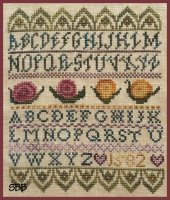A little on hand work today.

Embroidery is the art of decorating fabric. It includes cross-stitch, crewel (embroidery with wool floss), needlepoint, and quilting. We’ve already talked about quilted garments and other fabric pieces from the past. All of these techniques were first used by the upper classes. They had the time and money for the materials. Decorated clothing and homes showed others their wealth.
Embroidered fabric and clothing has been found in fossilized cloth from the 5th-3rd Century BCE. It has been found around the world.
The earliest surviving embroideries are Scythian, dated to between the 5th and 3rd centuries BCE. Roughly from 330 CE until the 15th century, Byzantium produced embroideries lavishly ornamented with gold. Ancient Chinese embroideries have been excavated, dating from the T’ang dynasty (618–907 CE), but the most famous extant Chinese examples are the imperial silk robes of the Ch’ing dynasty (1644–1911/12). In India embroidery was also an ancient craft, but it is from the Mughal period (from 1556) that numerous examples have survived, many finding their way to Europe from the late 17th to the early 18th century through the East India trade. (Britannica. https://www.britannica.com/art/embroidery. 4/26/2021)

Embroidery was stylized plants, trees, animals, and geometric patterns based on where you lived. European embroidery was mostly ecclesiastical in the beginning. Embroidery was brightly colored, some used gold thread, beads, and/or pearls. Many different items were embroidered – clothing, religious articles, bed covers, boxes, napkins and tablecloths. It usually belonged to the upper classes because cloth and floss was expensive. Lower classes may have done the embroidery for the families they worked for. Often it was the girls of the family doing their obligated lessons on how to run a household.

Tapestries usually depicted a scene from history or the church. These were used as decorations, to teach(since most people couldn’t read, the pictures told the history), and to help keep the rooms a little warmer. The Bayeux Tapestry in France is really an embroidery telling the story of the Norman conquest of France. It is nine panels of history using 10 colors of wool. It was used to teach the story of the invasion from the William the Conqueror in the church – Notre-Dame of Bayeux. If you every get to Normandy, take the time to go to Bayeux to see this amazing piece of work.

Counted cross stitch is embroidery using a background fabric that you count the threads for your design. Embroidery as we think of today is more free form compared to “counted” embroidery. Cross stitch uses an even woven fabric such as aida cloth or linen. Needlepoint is related to cross stitch because it uses a counted thread fabric. The fabric mesh for needlepoint is larger and the floss is thicker.

Another hand sewing method was English Paper Piecing. In Britain it was a very popular. The design was drawn on paper for the entire piece. Then the paper was cut into pieces. Fabric was wrapped/basted around the paper, and whip stitched together. “English Paper Piecing (EPP)” examples have been seen from the 18th century. In Kaffe Fassett’s Heritage Quilts there are beautiful examples of quilts from the mid-1800s that are paper pieced. These quilts in person take your breath away due to the size and exquisite workmanship. The fabrics are still beautiful as well.

All of these techniques have changed due to the industrial revolution, mechanization of tools, and today’s technology. Hand embroidery machines were developed in the early 1800s. Mechanized looms for cloth were also invented around the same time. Those besides the upper classes could now afford the materials. All of these techniques have benefitted from mass production of their tools. The lower cost of the tools allowed the lower classes to do these handwork methods on their home items.

If you are interested in learning more, go to:
Wikipedia/Embroidery
The Metropolitan Museum
The Royal School of Needlework
We have the tools for you to embroider, cross stitch, applique, and quilt. New patterns for cross stitch have arrived recently. Cross stitch fabric is available in 14ct – 40ct even weaves, aida, and linen. We have needles, needle threaders, and lots of floss. Some are hand dyes with the colors being saturated and slightly varied. We have many different shapes of papers for English paper piecing. We have templates for making your own papers and fussy cutting.









Interested in learning how to do any of these? Let us know and we’ll put you on an interest list. I’m in the process of scheduling new classes!
Bring in your projects to share with us. We love seeing how talented our customers are.
Thanks all and Happy sewing,
Phyllis and the QA staff